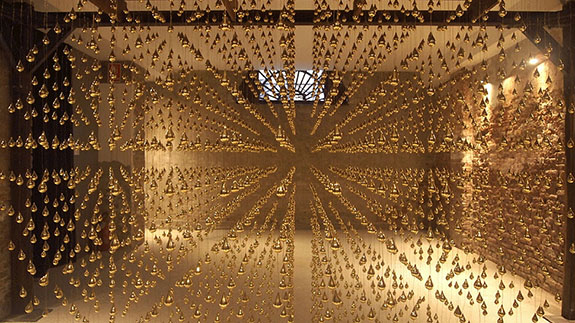 |
.jpg) |
dessert, ovos moles. One is the personal story of a Japanese woman traveling, finding love, and learning to make the dessert. The other is a historical tale told in Thai, touching on colonialism, trade routes, and cultural exchange with the conclusion: “history is like the yolk that was thrown away, like the birth of ovos moles.”
 |
.jpg) |
Maria Thereza Alves’ For Wake in Guangzhou: The History of Earth, follows the global dissemination of seeds as a manically scrawled collection of arrows, Xeroxed images, diagrams, drawings and handwritten notes. They wend along the walls of a curving corridor and implicate various world-historical figures (as well as animals) as seed carriers in a “conspiracy” spanning all of human civilization. Other works that attempt this approach are near-misses: Shimabuku’s I’m Traveling with a 165-meter Mermaid manages to convey some of the significance of the artist’s journey with an evolving mermaid legend from 13th century Japan, but sinks under too much trivia. Chihiro Minato’s The Museum of Gourd, has many compelling gourd-based pieces, but is similarly weighed down by dull trinkets.